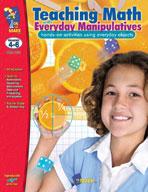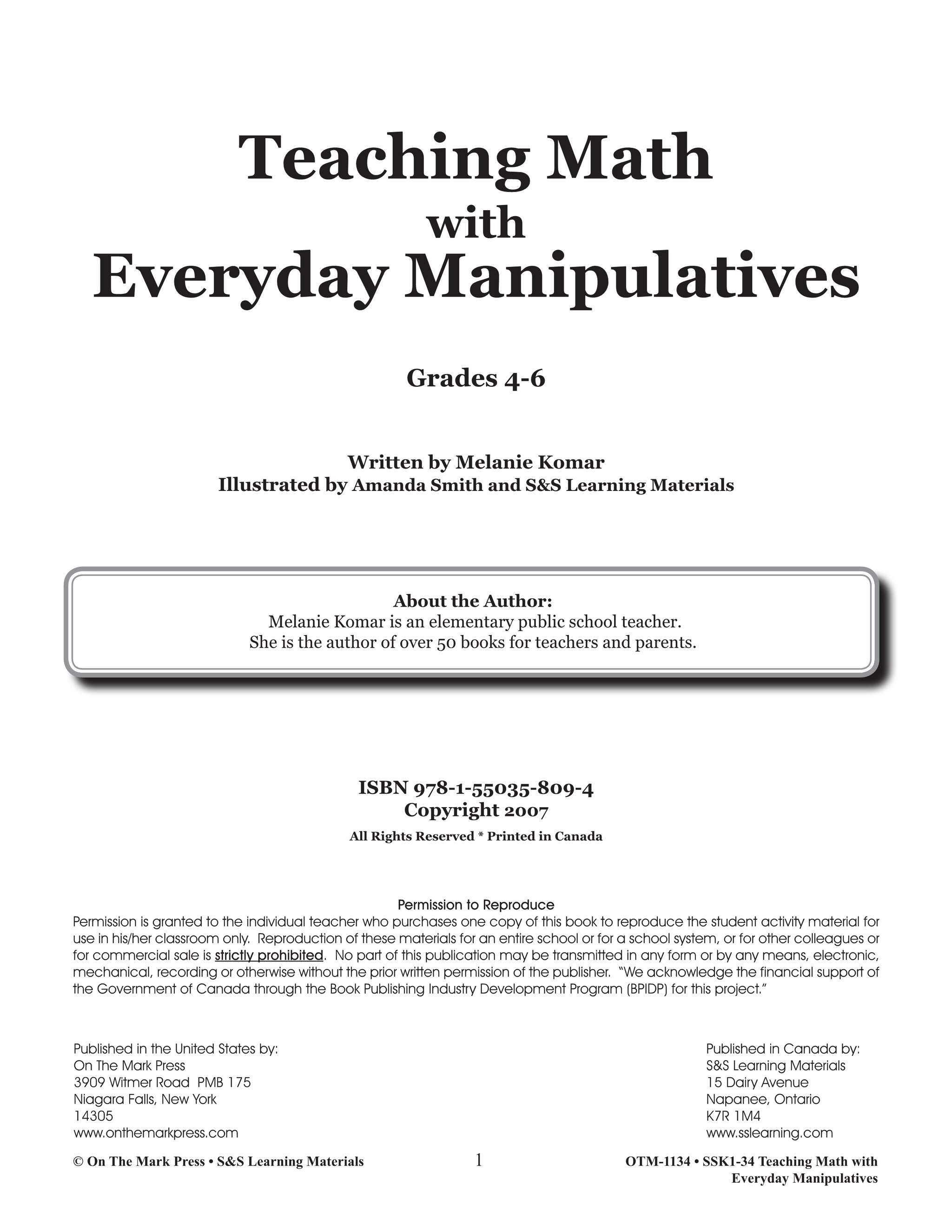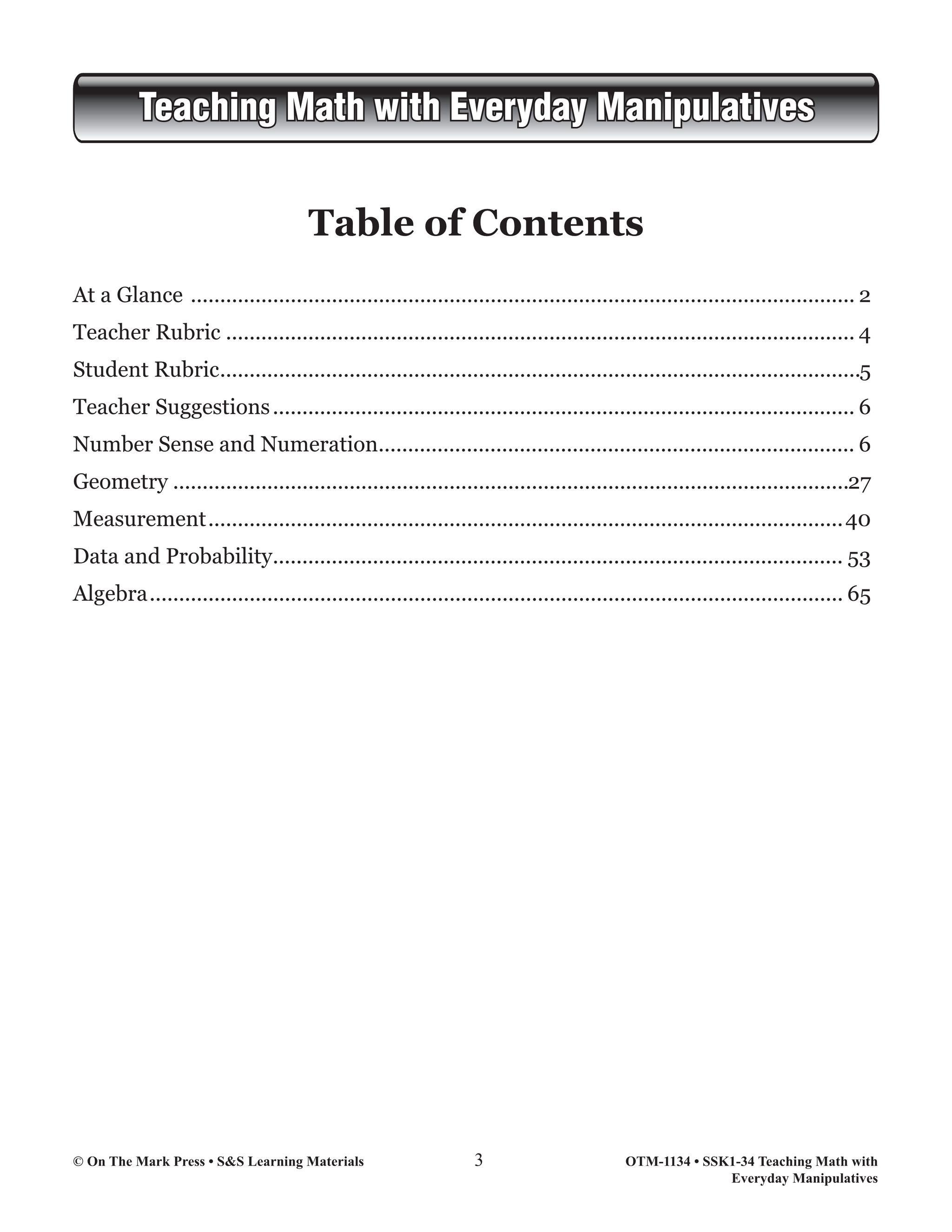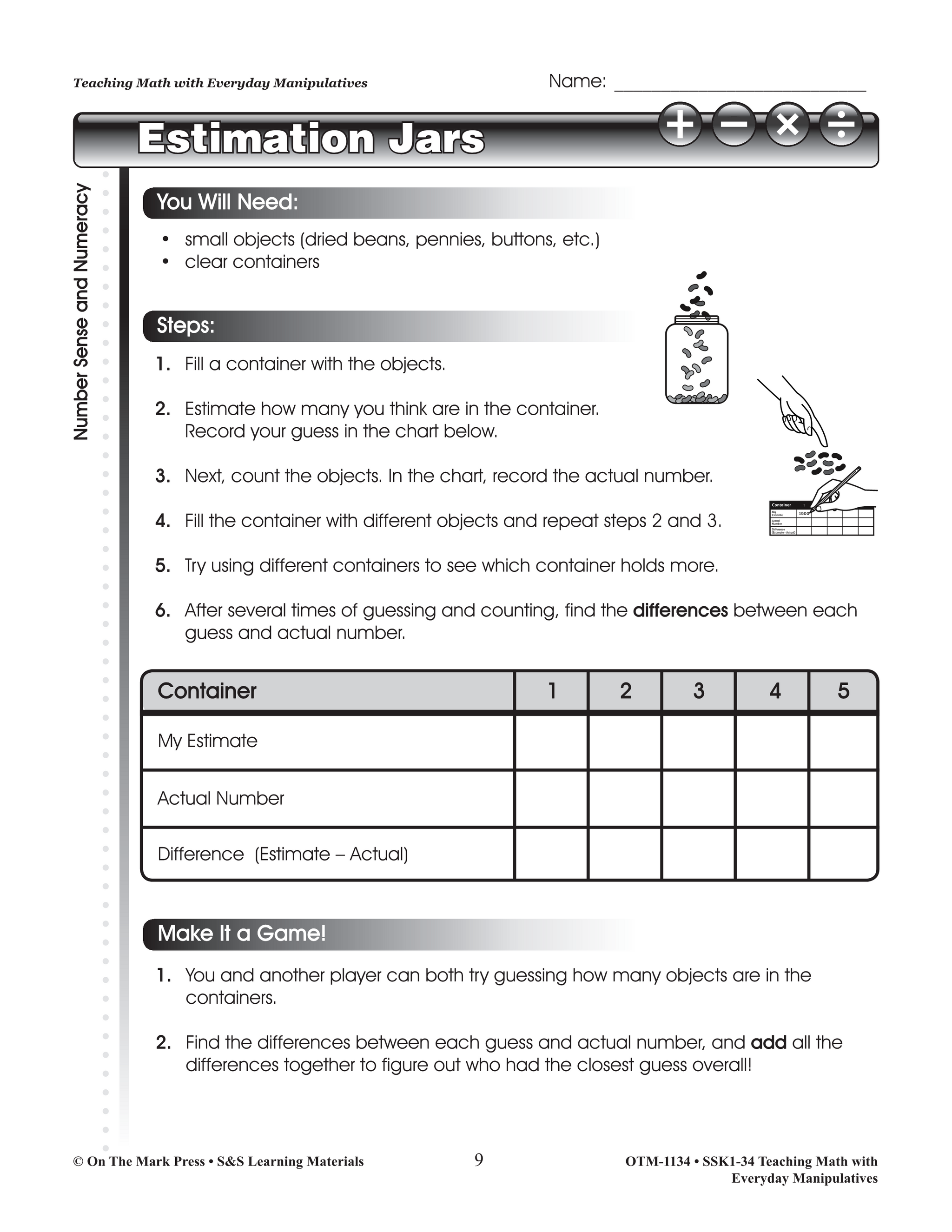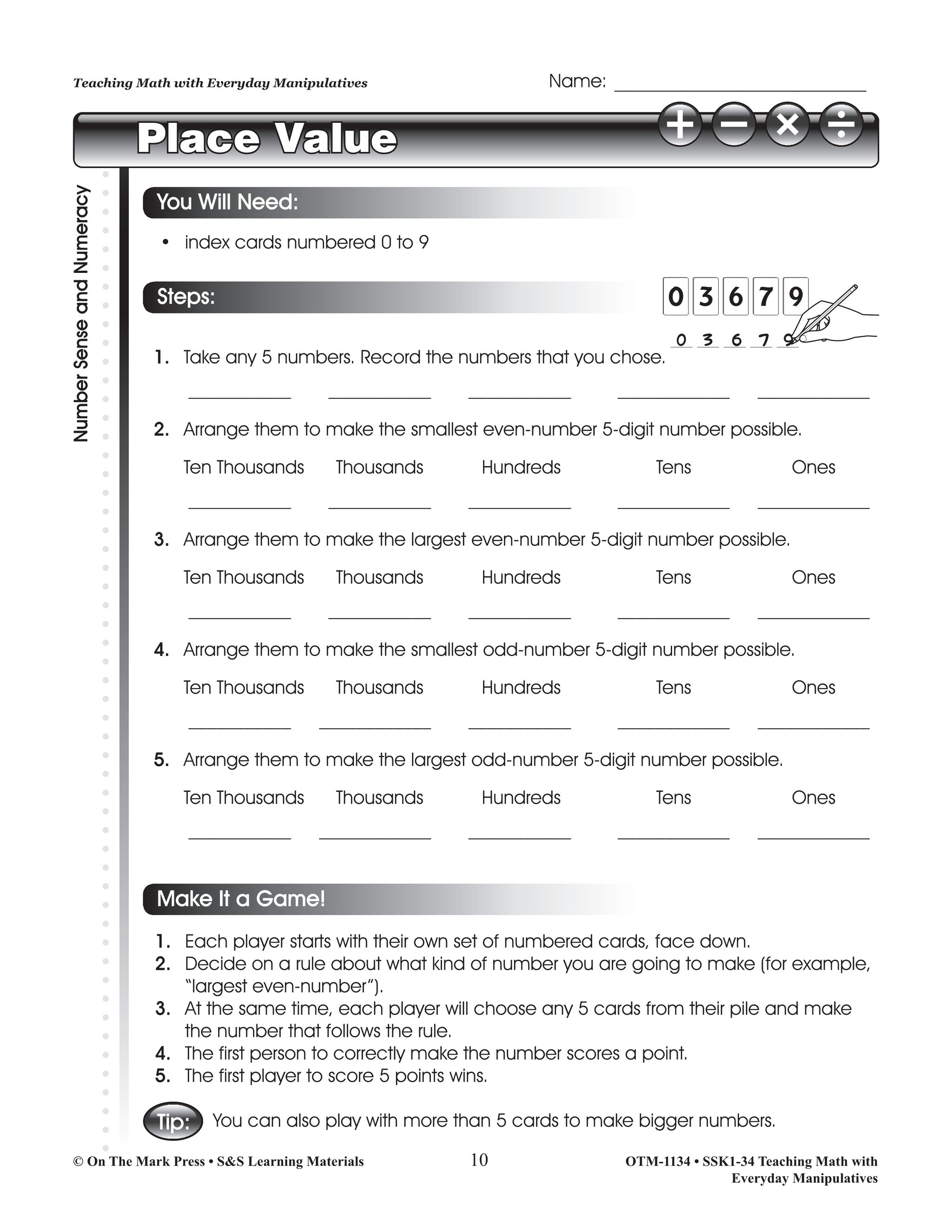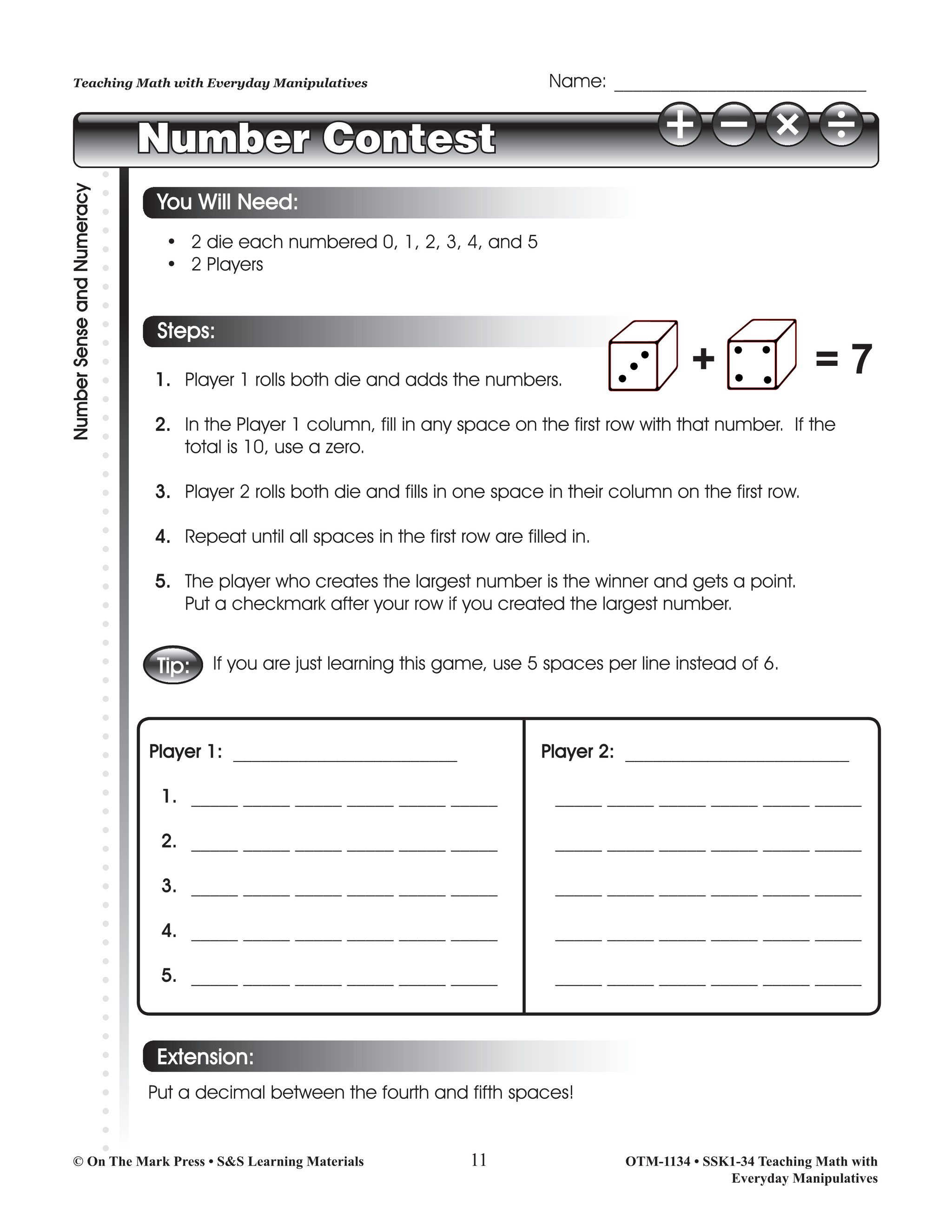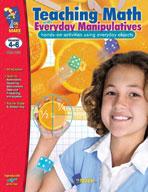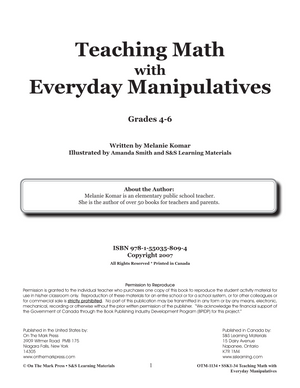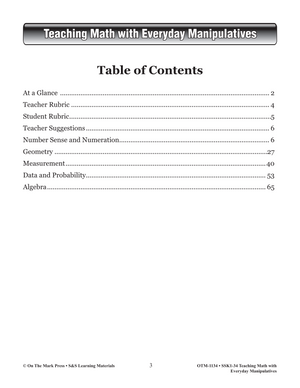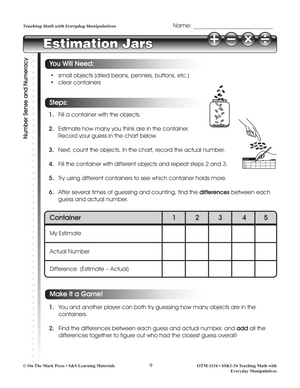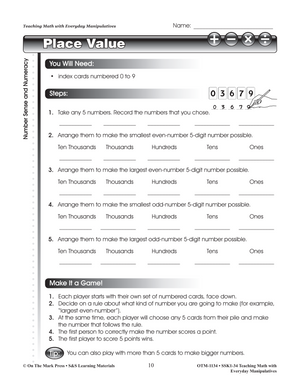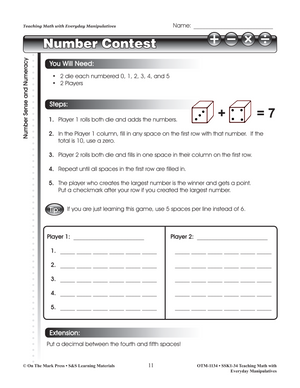Teaching Math with Everyday Manipulatives Grades 4-6
EBOTM1134
$24.99 CAD
Additional information:
- Author : S&S Learning Materials
The major curriculum expectations for junior math are brought to life with these hands-on activities that involve students directly in their learning.
There is no better way to learn concepts than to experience them, and with these activities students create their own math manipulatives with everyday items found in the classroom or at home.
Whether you use these at the start or conclusion of math lessons, or as the basis of individual or group work, you'll find them a valuable addition to your teaching strategies.
You should find many of these activities adaptable in terms of actual materials used. For example, if the activity suggests “buttons”, often “pennies” can be used. Many activities suggest a game to play and implies that the games are 2 Player games, however, many activities can have more than two students and often, a single person can follow the steps alone. Finally, most of the activities are suitable for the average Grade 4, 5, or 6 student. While some activities will be quite challenging for Grade 4 or review for Grade 6, many can be adapted to each of the grade levels.
Teachers can set the standard that they expect their students to achieve by showing examples of students who are performing the activity at the expected level. For example, save a student sample of a graph or pattern (take a picture if it was done with manipulatives) of a suitable level of work and leave it at the centre. Students working below or above grade level should be encouraged to work to the best of their own ability. Students who achieve below grade level results should be encouraged to watch and learn from others and observe how they are getting their results. Students working above grade level should be encouraged to model how they are working through the activity. Encourage peer teaching whenever possible.
Everyday Manipulatives for:
Number Sense and Numeration
-
Numeration and place value
-
Arithmetic functions with whole numbers, rational numbers, and integers (break down to add/subtract, multiply/divide, rationales, integers)
-
Fractions, decimals, and percents
Geometry
-
Two and three dimensional shapes
-
Symmetry and translation
Measurement
-
Distance, in appropriate units
-
Time, in appropriate units
-
Perimeter and area
-
Volume and surface area
Data and Probability
-
Chance and probability
-
Data collection and management
-
Measurement of central tendency
Algebra
-
Patterns and variables
-
Graphical representation
80 pages including an answer key.

